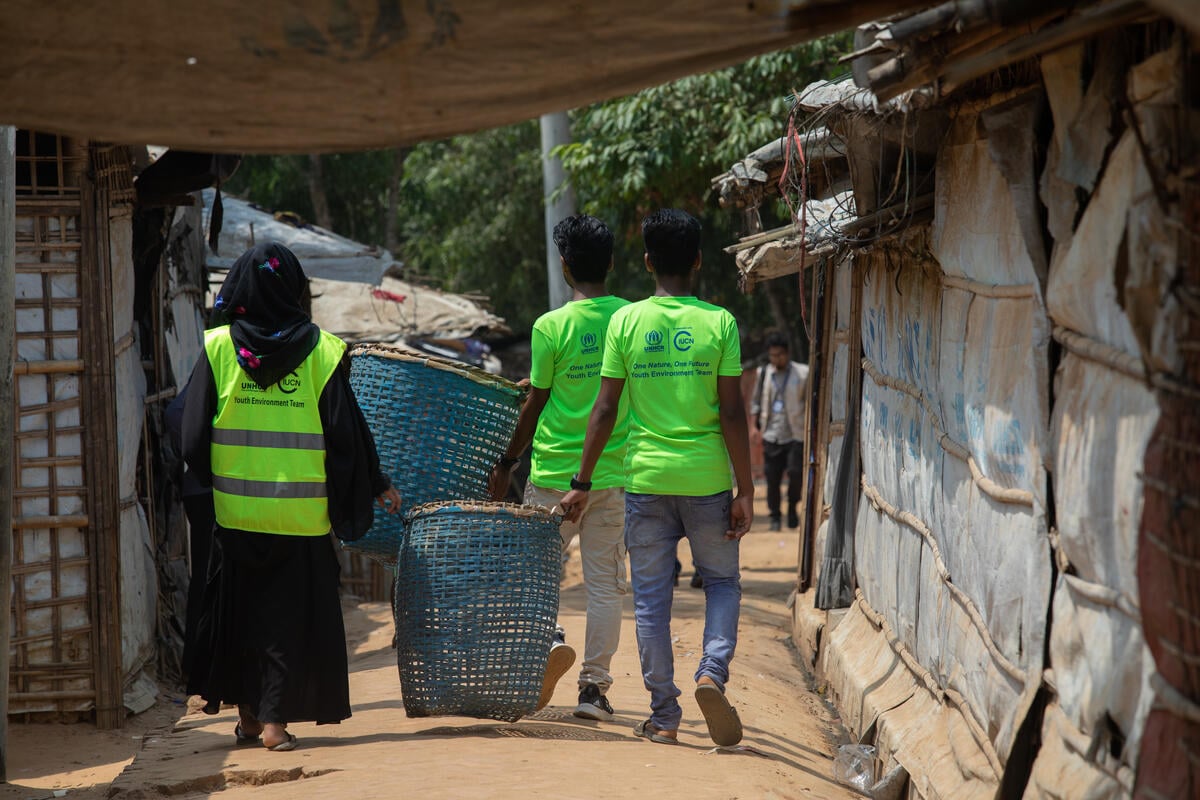Young Rohingya refugees are helping to turn world's largest camp green
Young Rohingya refugees are helping to turn world's largest camp green
Samia has spent five of her 14 years living in Kutupalong – the largest and most densely populated refugee settlement in the world.
The series of camps that make up the settlement were carved out of the forest in southern Bangladesh in 2017 to shelter hundreds of thousands of Rohingya refugees fleeing violence in western Myanmar’s Rakhine State. Nearly one million people are now crammed into an area of just 17 square kilometres. Bamboo shelters throng the hillsides and narrow roads teem with pedestrians, rickshaws, humanitarian vehicles and traders. It is no wonder that Samia looks skyward for a sense of peace.
“When I see a flock of birds flying nearby, I feel good,” she says. “I like the sound of the birds.”
After arriving in Bangladesh, following a traumatic journey from Myanmar, Samia was dismayed to see the forest being destroyed as trees were cleared to make way for shelters.
“When I first came here, I saw people kill wild animals when they entered the camps. They cut the trees and threw them away to cultivate the land. And people used to litter everywhere.”
“Climate change means it's too hot during the summer and too rainy during the monsoon.”
Thanks, in part, to her efforts and those of other young Rohingya refugees in Kutupalong, attitudes towards wildlife and the surrounding forest are starting to change.
Samia belongs to one of five youth groups in the camps that, along with five similar groups in the surrounding host community, have received training on environmental issues from UNHCR, the UN Refugee Agency, and its partner organization, the International Union for Conservation of Nature (IUCN). They have learned about the links between destroying trees and vegetation and the climate crisis that increasingly impacts their daily lives.
“Climate change means it’s too hot during the summer and too rainy during the monsoon,” says Samia. “I’ve seen with my own eyes shelters being broken by landslides and people being injured.”
Last year, the youth groups were asked to identify environmental issues affecting their section of the camp and to come up with their own solutions to them. Samia jumped on the opportunity to educate her family, friends and neighbours about the importance of protecting trees and local wildlife that wanders into the camp. She and the rest of her group run awareness-raising sessions with children, adults and local leaders like imams.
“I tell them, ‘If you let the trees grow, you will get shade and sit peacefully under them.’ I tell them not to kill the animals because they benefit us.”
Southern Bangladesh is extremely vulnerable to the impacts of climate change. The refugees’ makeshift shelters, many of them built on deforested, unstable hillsides, provide little defense against tropical storms of increasing intensity. Last year alone, flooding and landslides forced some 24,000 refugees to abandon their homes and belongings and 10 refugees died during heavy monsoon rains.
“We are witnessing climate change every day,” says Mohammed Rofique, 18, who belongs to another youth group. “But the big countries are not seeing it; they are the ones who need to be aware. They need to stop cutting trees. Here, we’re trying to save our trees and save nature.”
Rofique’s group is trying to improve waste management and the shortage of bins in their part of the camp, to reduce pollution and the clogging of drains and canals.
“People used to throw their rubbish everywhere. It smelt really bad, and it was unsafe for the children,” he says. “Rubbish used to block waterways so when it rained, it flooded and spread waste around the camp.”
As well as making and distributing bins made from bamboo, the group has planted gardens in open areas where people used to throw their rubbish.
Besides the obvious environmental benefits, Ehsanul Hoque, who works with UNHCR’s environment unit, points out that the youth groups are equipping young people in the camps with problem-solving and leadership skills, and giving them a sense of purpose in a place where there are very few opportunities to access higher education or livelihoods. “We’re letting them know that they can [make a difference]. You can talk to your family, your neighbour, you can start with yourself.”
UNHCR works with partners and refugee volunteers to regreen the camps and restore the ecosystem by planting thousands of trees, shrubs and grasses, restoring waterways, and distributing Liquefied Petroleum Gas (LPG) to all households as an alternative to firewood.
• See also: Rohingya refugees restore depleted forest in Bangladesh
Samia says she has persuaded her younger brothers to stop throwing stones at birds and that other refugees are receptive to the group’s messages about protecting the environment.
“Some people don’t want to listen to us, but I truly believe that, gradually, their viewpoint will change,” she says. “At the end of the day, I feel good thinking that I raised awareness in my community.”
Recently, when a large snake was found in her block of the camp, some of her neighbours wanted to kill it, she says. “But others said, ‘We don’t need to, we can take it to the forest and release it’. So they put it in a big jute bag and carried it there.”













